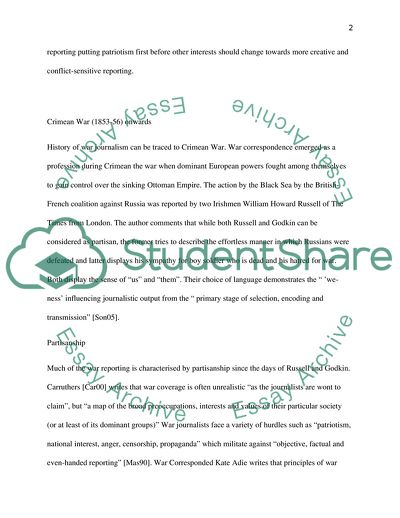Cite this document
(The Constraints Placed on War Correspondents Assignment Example | Topics and Well Written Essays - 2250 words, n.d.)
The Constraints Placed on War Correspondents Assignment Example | Topics and Well Written Essays - 2250 words. https://studentshare.org/journalism-communication/1810119-critically-evaluate-the-constraints-placed-on-war-correspondents-using-example
The Constraints Placed on War Correspondents Assignment Example | Topics and Well Written Essays - 2250 words. https://studentshare.org/journalism-communication/1810119-critically-evaluate-the-constraints-placed-on-war-correspondents-using-example
(The Constraints Placed on War Correspondents Assignment Example | Topics and Well Written Essays - 2250 Words)
The Constraints Placed on War Correspondents Assignment Example | Topics and Well Written Essays - 2250 Words. https://studentshare.org/journalism-communication/1810119-critically-evaluate-the-constraints-placed-on-war-correspondents-using-example.
The Constraints Placed on War Correspondents Assignment Example | Topics and Well Written Essays - 2250 Words. https://studentshare.org/journalism-communication/1810119-critically-evaluate-the-constraints-placed-on-war-correspondents-using-example.
“The Constraints Placed on War Correspondents Assignment Example | Topics and Well Written Essays - 2250 Words”. https://studentshare.org/journalism-communication/1810119-critically-evaluate-the-constraints-placed-on-war-correspondents-using-example.


